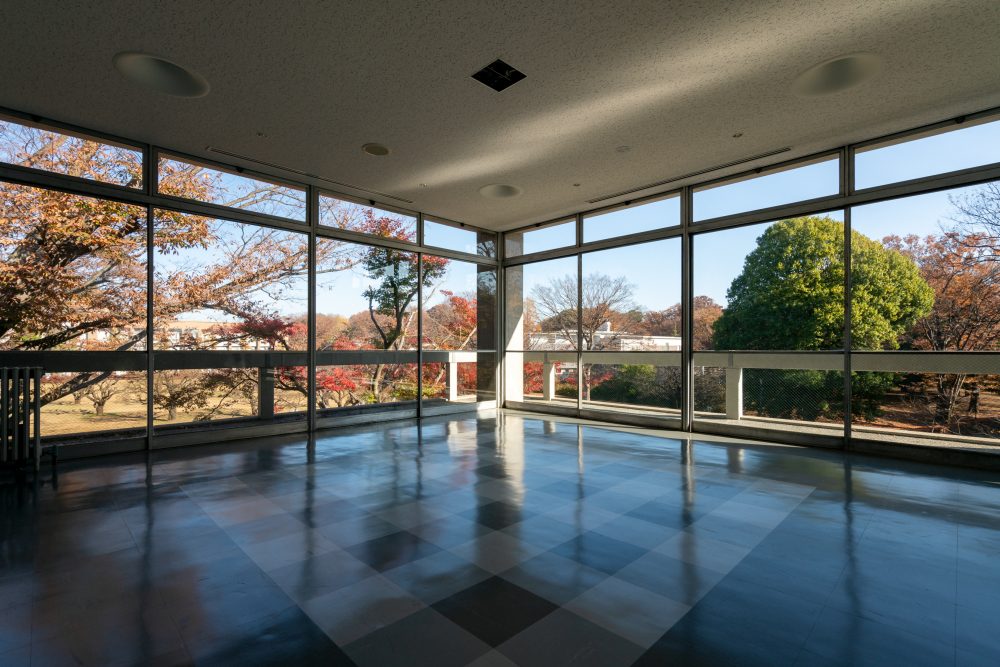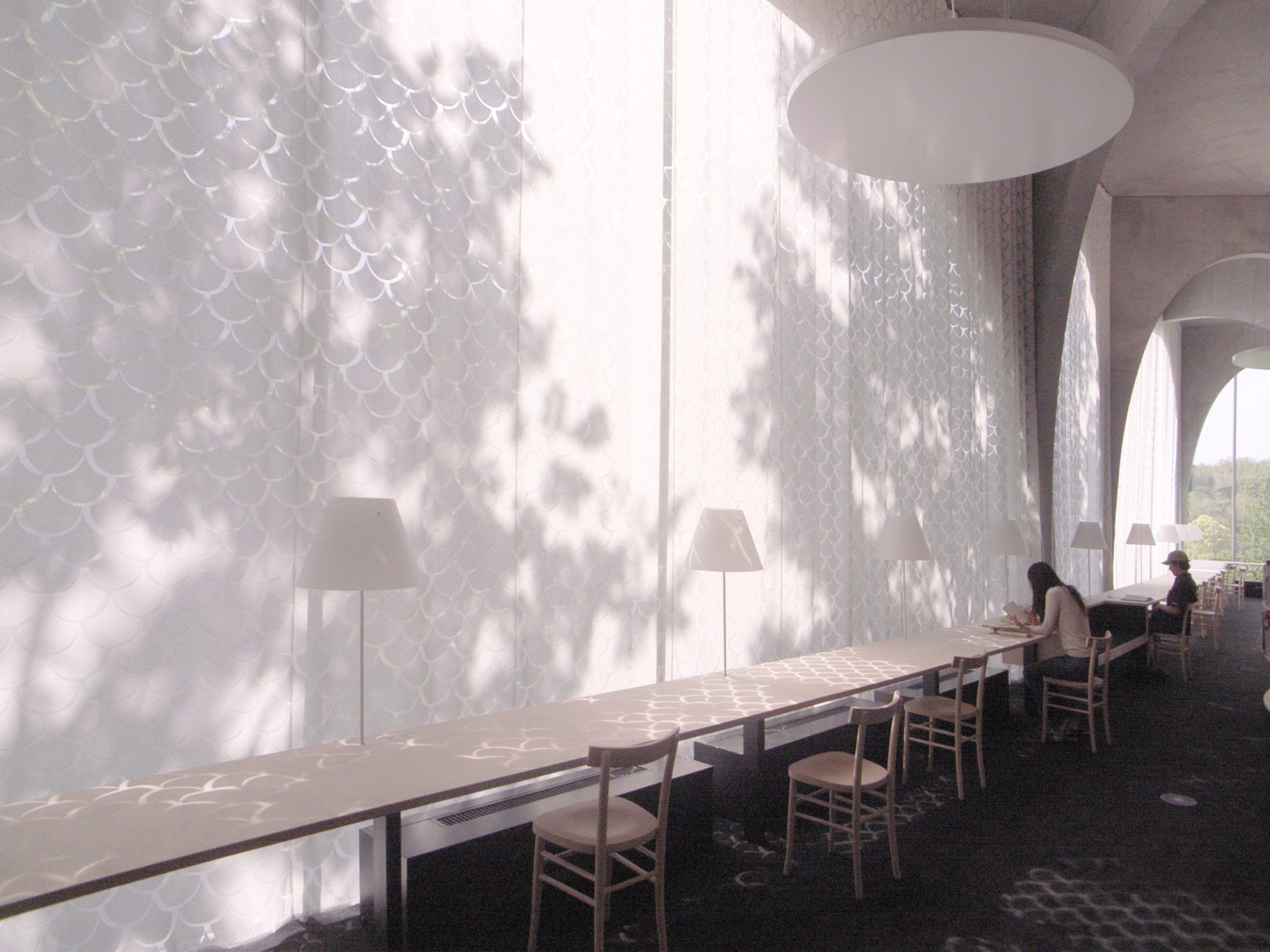
Giving Color to Windows
18 Mar 2015
- Keywords
- Architecture
- Columns
- Design
Textile coordinator/designer Yoko Ando has been directing how textiles are used around windows in the work of many architects both young and old. Spaces can be enriched by adding color to their windows. Ando invites us to think about the significance of giving color to windows by showing us some of her past work.
-
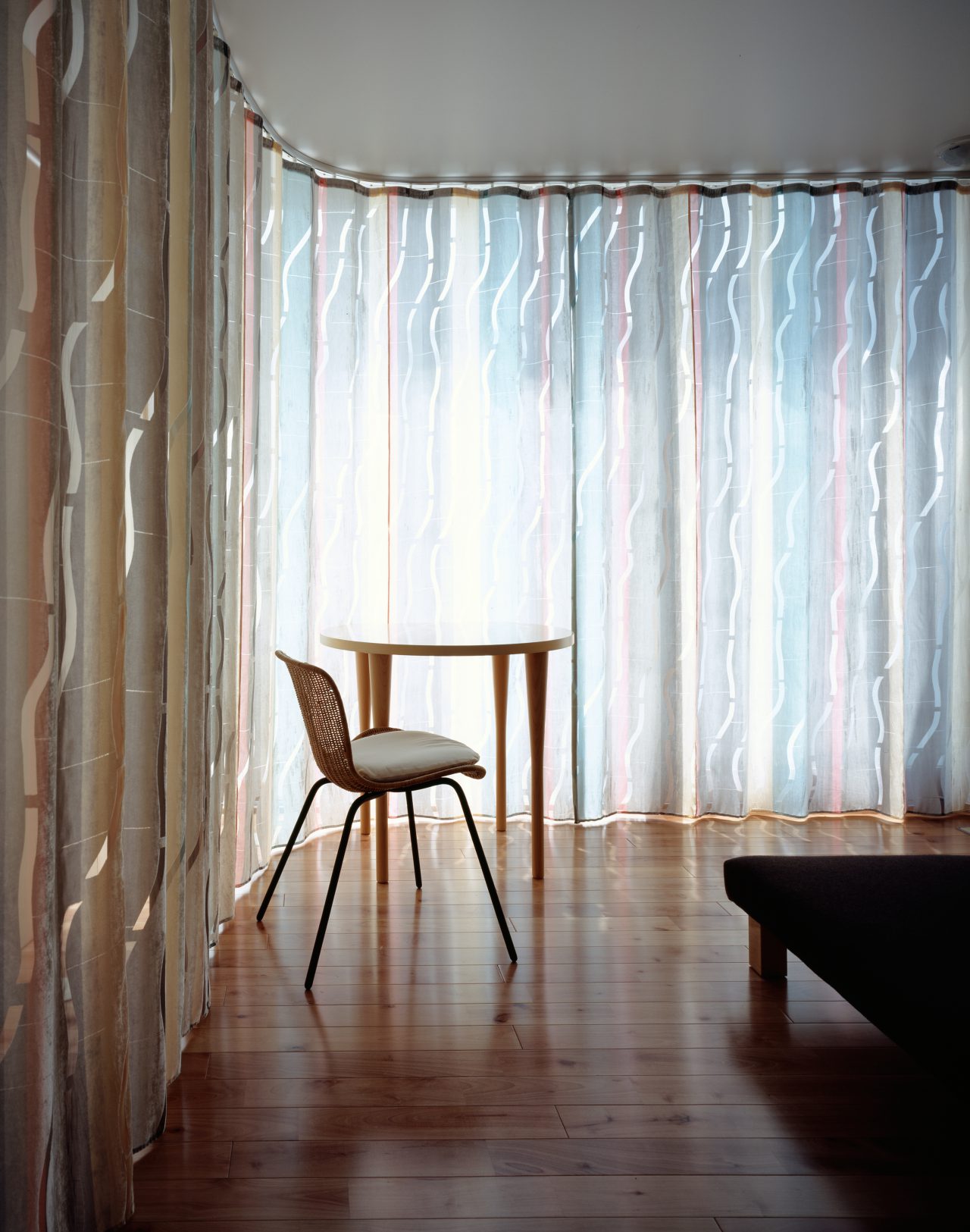
SUS Corporation Fukushima Factory Dormitory, 2005
(work done while at NUNO Corporation).
Design: Toyo Ito & Associates, Architects. Photo: Daici Ano.
The exterior walls of these buildings that are composed with gently undulating aluminum surfaces subtly change color depending on the light of different weather conditions and times of day. The stripes of the curtains in this room express the character of this light. The ever-changing textured surface smoothly connects the glass surfaces of the windows to the closets.
-
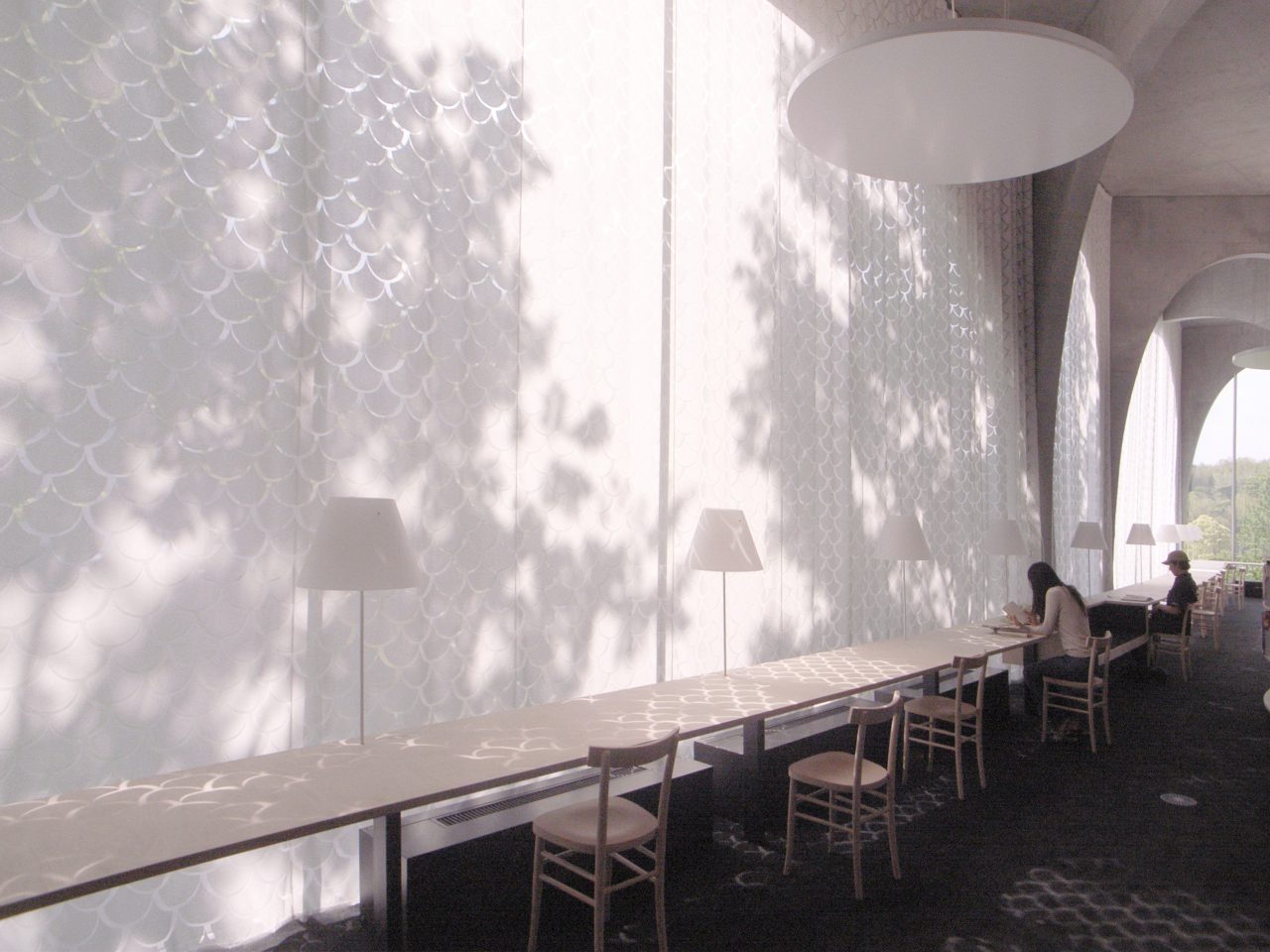
Tama Art University Library (Hachioji Campus), 2007
(work done while at NUNO Corporation).
Design: Toyo Ito & Associates, Architects.
Photo: Toyo Ito & Associates, Architects.
The light seeping in through the edges of the scale-like pattern of the curtains projects arch-shaped shadows onto the tables as people read books in the sunlight beside the library’s windows. The building’s concrete arches invite one to feel the passing of time through the windows.
-
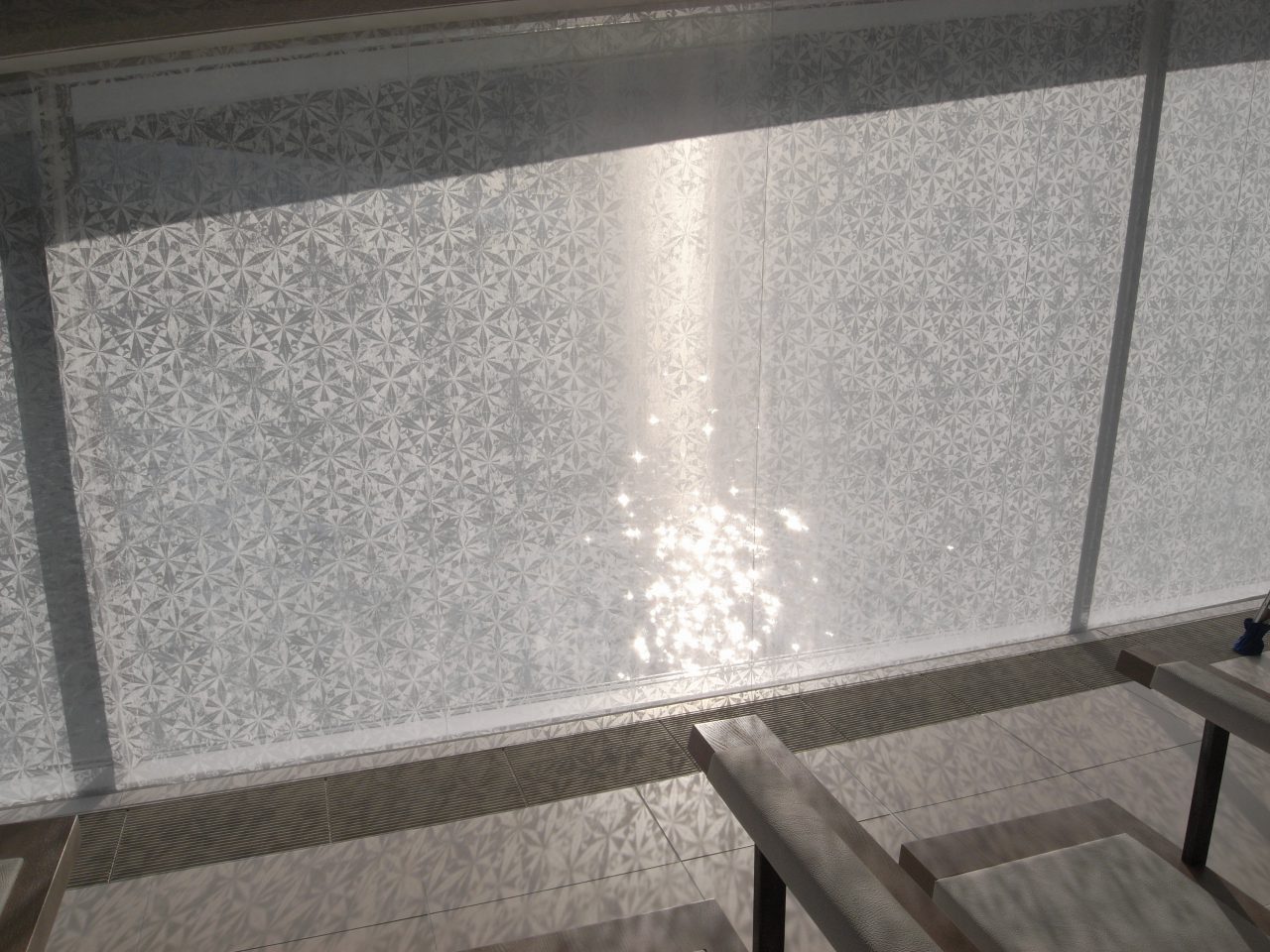
Atema Kogen Resort Belnatio La Sala, 2010
(work done while at NUNO Corporation).
Design: Kajima Corporation. Photo: Kajima Corporation.
I made this pattern for the glass windows of the wedding hall by combining a folded iris pattern that draws on the Atema Kogen Iris Festival and a snow motif that symbolizes the snowy region. The light from the window presents newlyweds with a shower of snow crystals and flowers like a rice shower blessing.
-
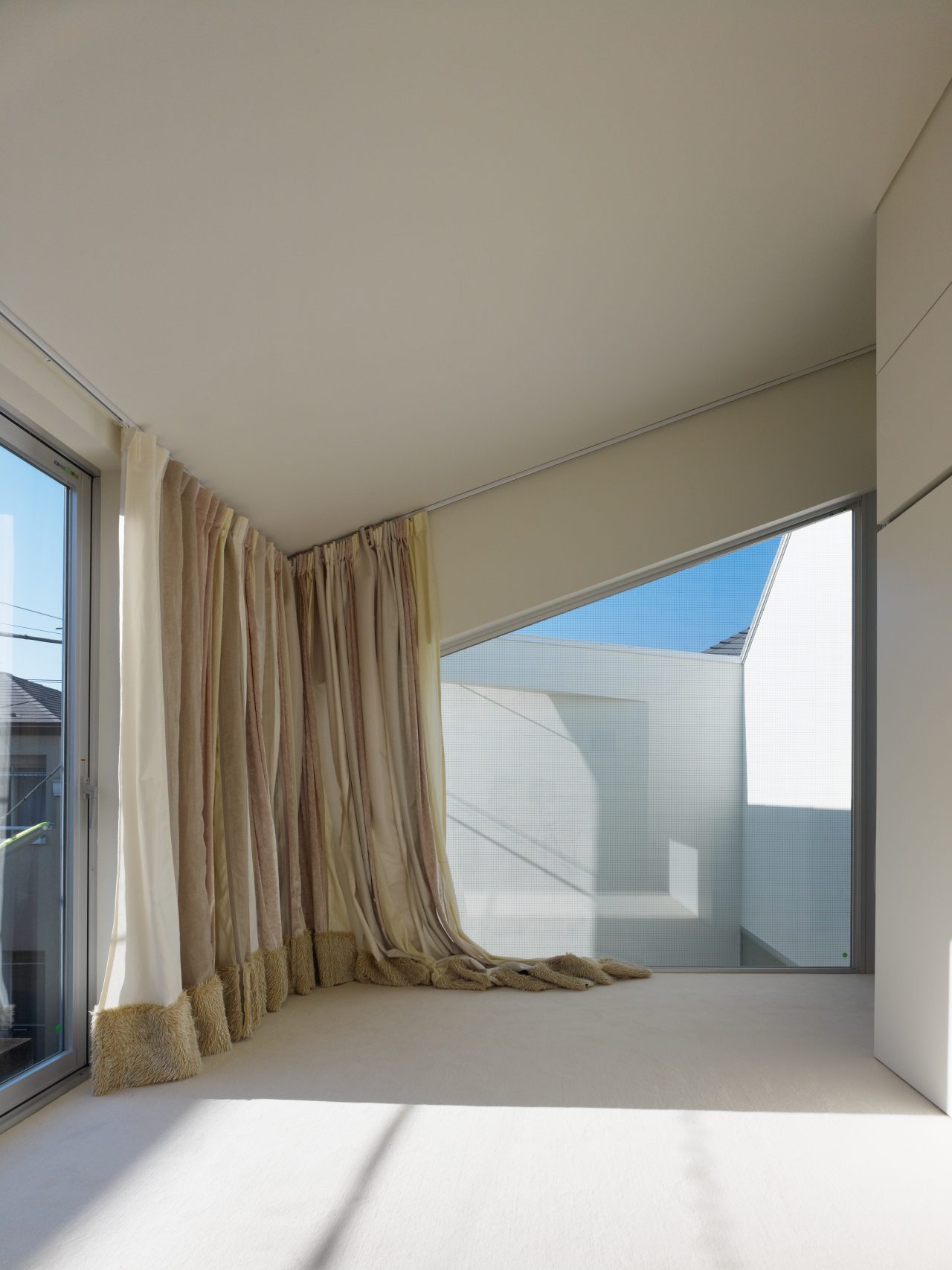
House M, 2010 (work done while at NUNO Corporation).
Design: Teppei Fujiwara Architects Labo. Photo: Daici Ano.
I made this hefty curtain that slides down a diagonal wall for a window in a bedroom of a private house designed by Teppei Fujiwara. When it is not in use, it brings to mind a furry animal that is lying comfortably at rest on the floor beside the window.
-
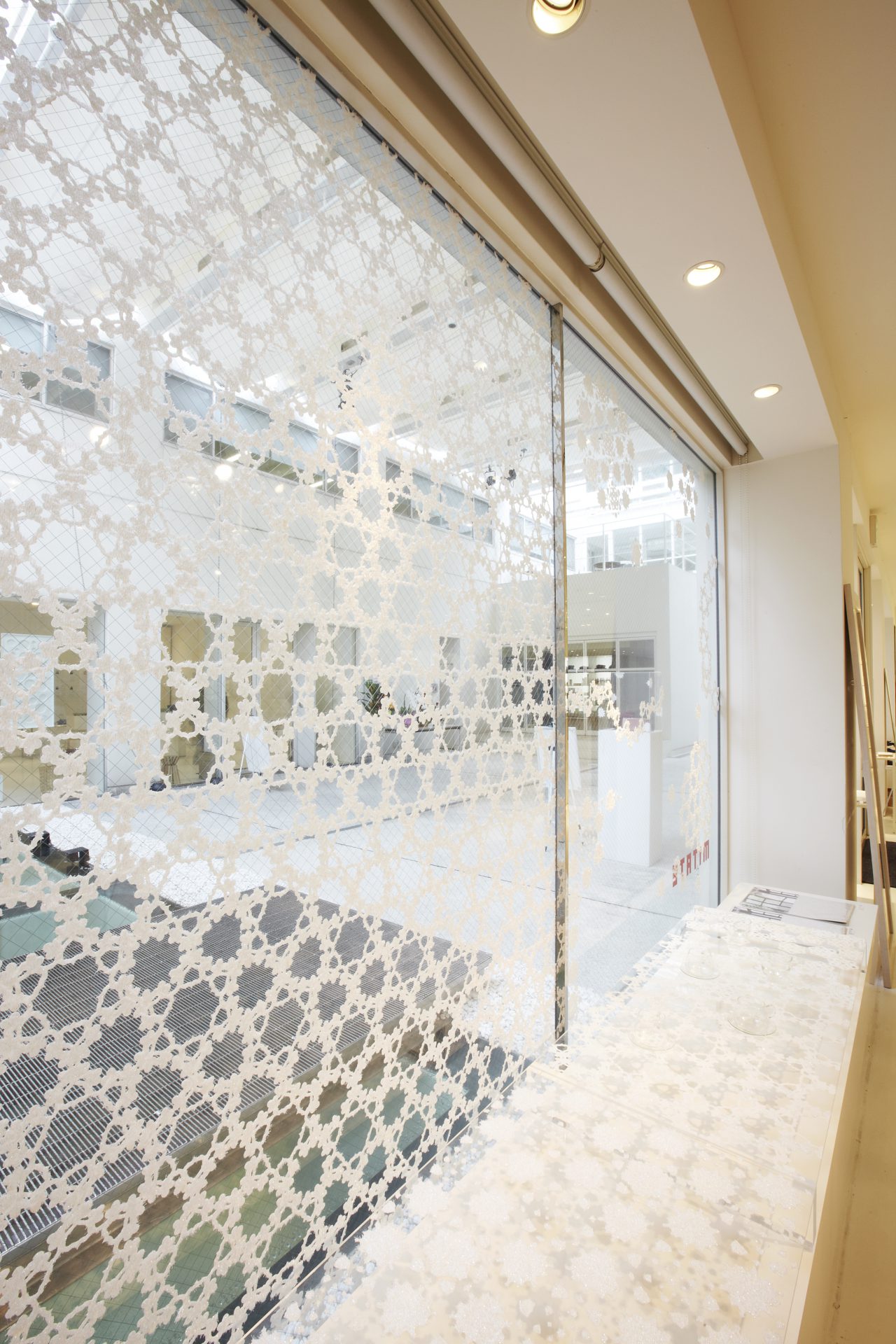
sticky fabric / snowflake, 2011, exhibited in the exhibition Nuno kara umarete… [Born from cloth…] at Gallery MITATE.
Photo: Fumihito Katamura
I made a curtain that does not need rails. I used a laser cutter to cut out specially manufactured micro-suction fabric in the shape of snow crystals and stuck them directly onto the glass window. The hard glass took on a slightly softer appearance when covered with the fabric.
-
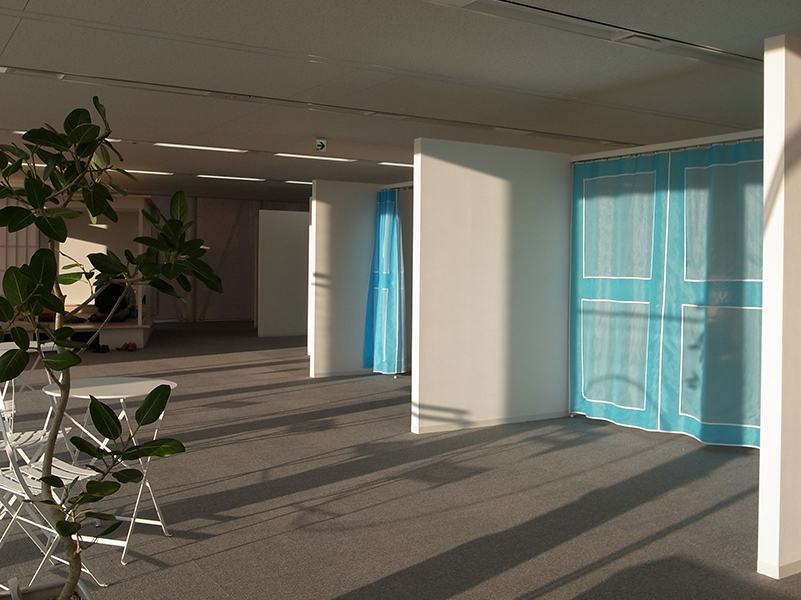
Office in Kitasando, 2013.
Design: SUPPOSE DESIGN OFFICE
These are curtains that partition the large space of the shared office like pieces of furniture. I finished them to be transparent by layering blue fabric and white fabric, and I positioned them to be like open windows inside the room.
-
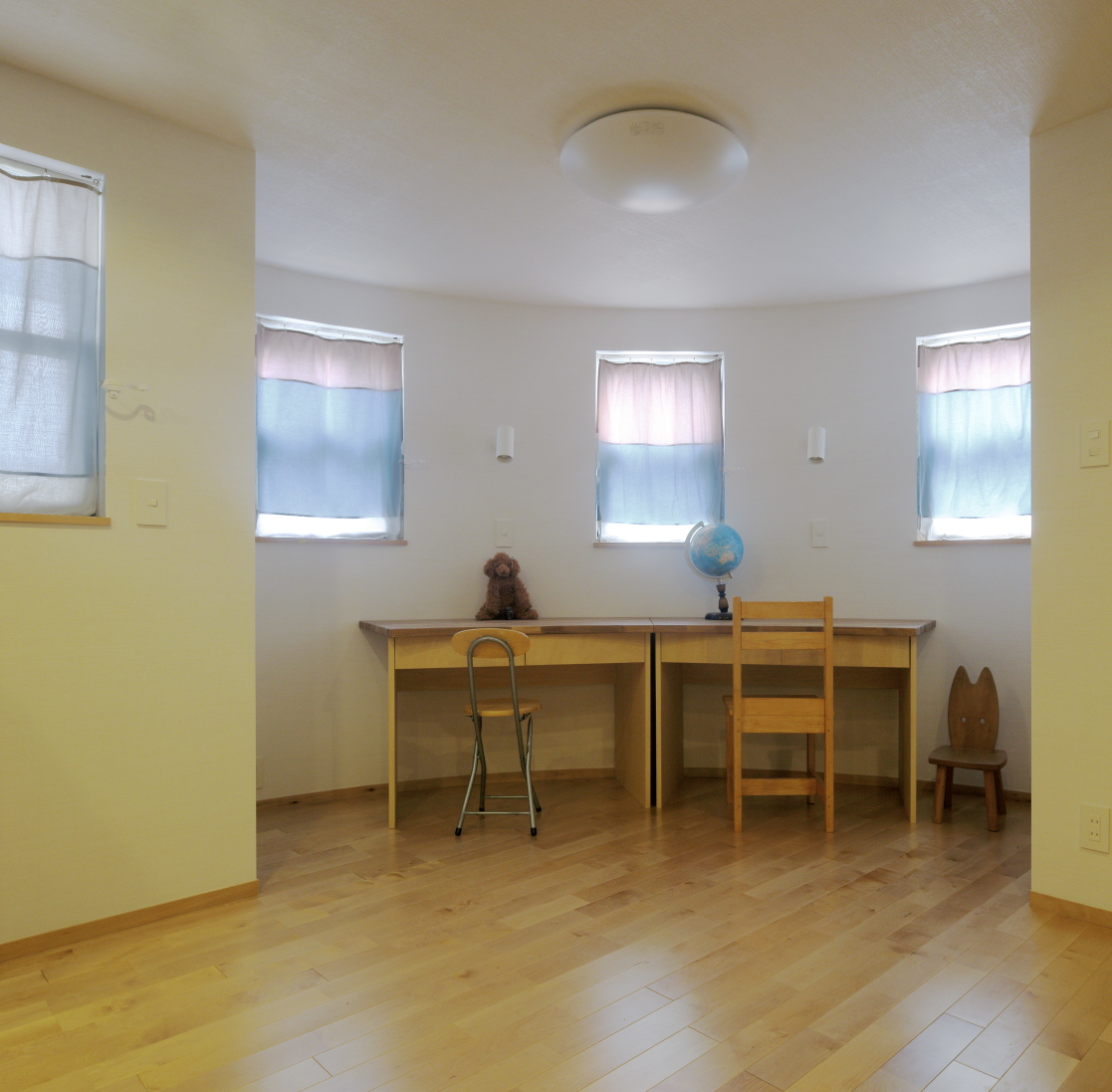
2 + 3 House, 2013.
Design: Atolie Architects. Photo: Sadamu Saito.
Curtains for the children’s room. I covered the small windows with curtains that resemble abstract paintings made from a combination of soft colors. I designed them with the wish that the children who spend time in this room will imagine fluffy clouds even on cloudy days.
-

360°, 2013.
Design: NAYA architects. Photo: NAYA architects.
A curtain for an architect friend’s personal residence. I joined together simple cloth of varying thicknesses to create a patchwork for the space that made use of materials in a straightforward manner. This cloth provides privacy even while it also softly brings in the outdoor scenery.
-
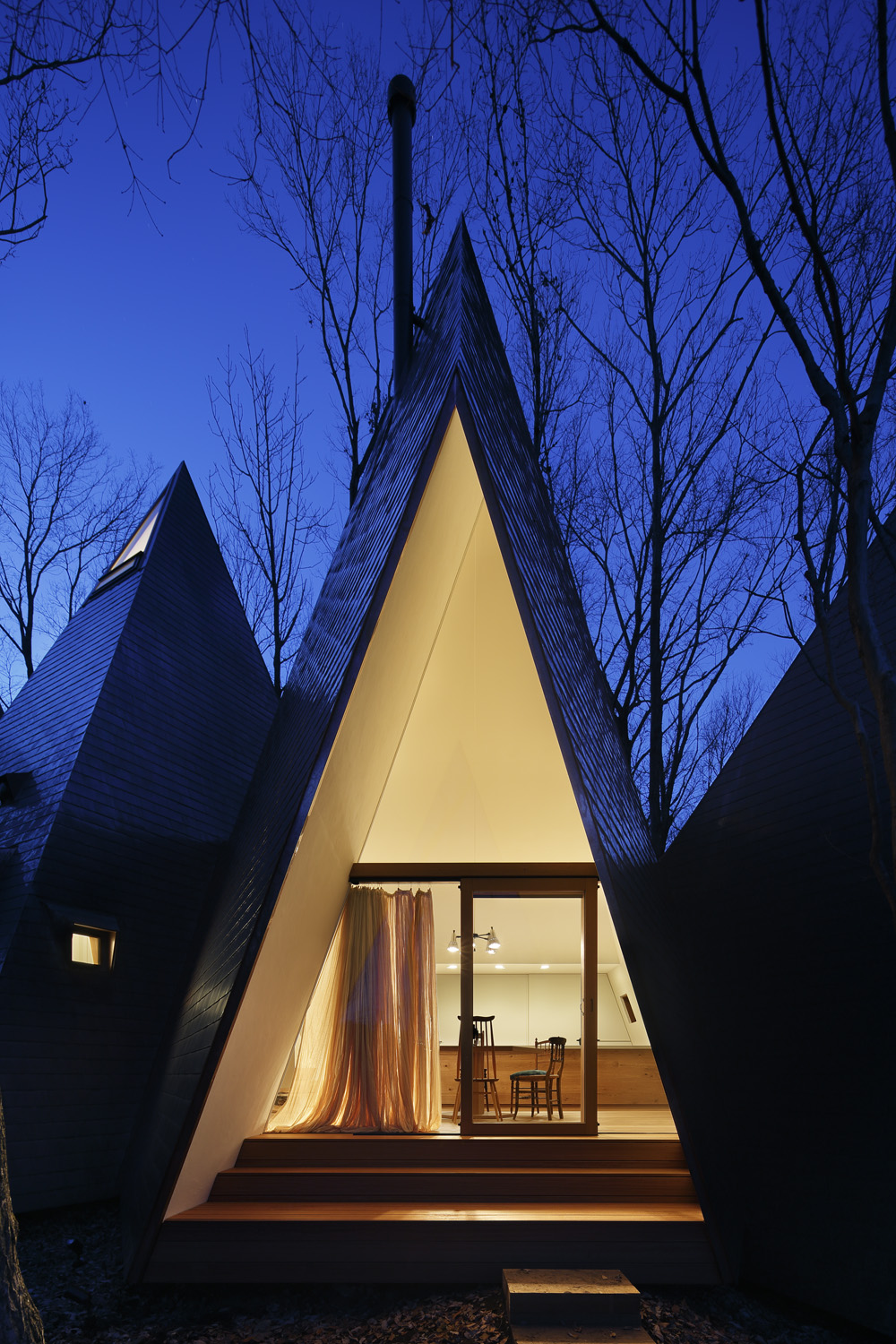
Nasu Teepee, 2013.
Design: Hiroshi Nakamura & NAP Co., Ltd.
Photo: Nacása and Partners Inc. + Koji Fujii.
I put in soft pleated curtains to set off the views through the windows of this house with triangular roofs that sits beautifully within the natural landscape of Nasu. I used natural materials such as hemp in order to draw in the sense of nature into the rooms.
-

ARICA, Ne Anta, 2013.
Theatre production: Theatre Company ARICA. Photo: Masaru Miyauchi.
The window in the set of this avant-garde play based on Beckett’s Eh Joe has been given the role of connecting the male protagonist with a female ghost. To him, the window represents the very existence of the other. The window watches over the process of the protagonist’s breakdown during which both his mind and the curtain gradually fall apart as he repeatedly opens and closes the curtain to confirm its existence.
-
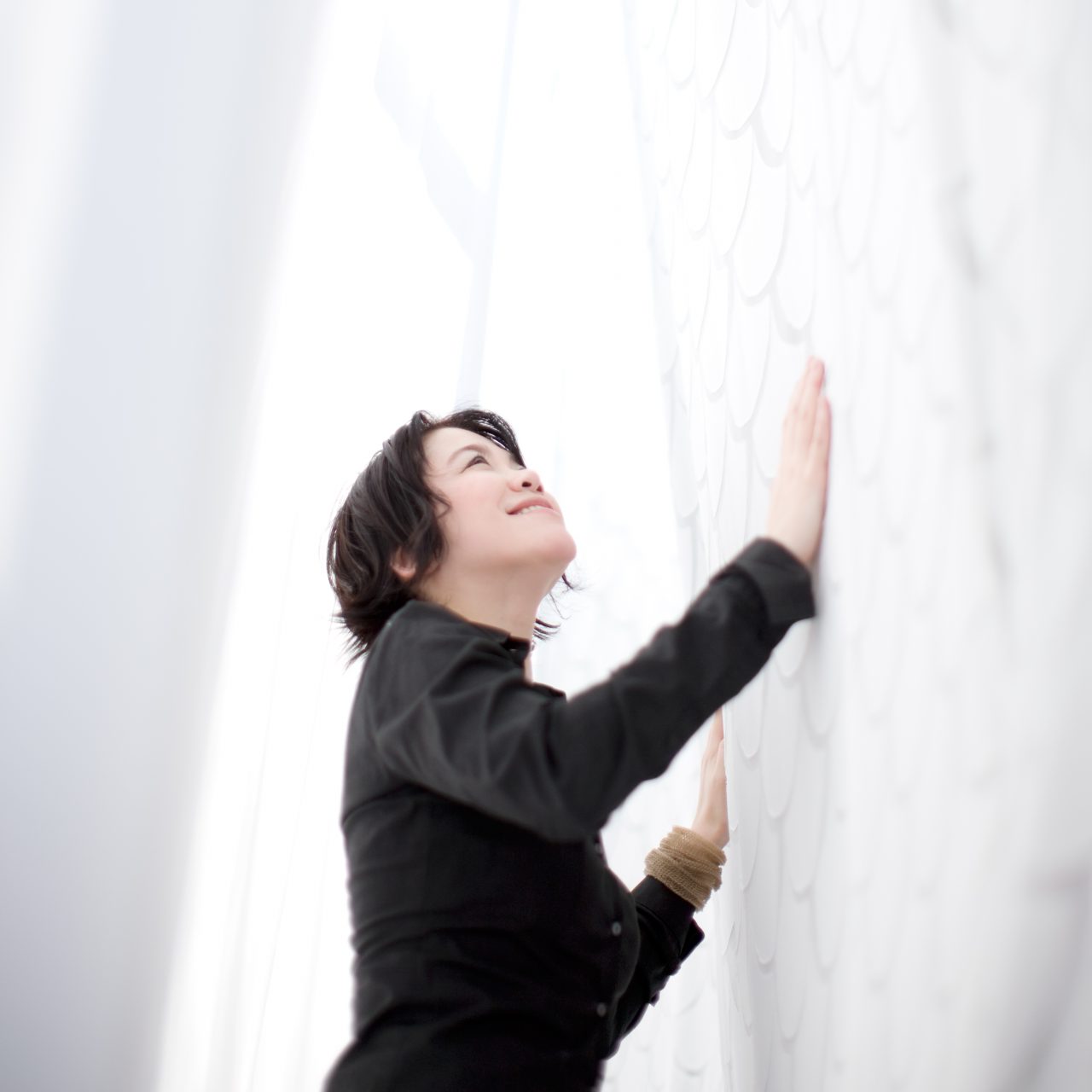
photo:Atsushi Nakamichi
Yoko Ando
Textile coordinator/designer. Born 1968 in Tokyo. Employed as a creative staff member at the NUNO Corporation after graduating from the graphic design department of the Musashino Art University Junior College of Art and Design. Left her job and established Yoko Ando Design in 2011. She has worked on producing the textiles used in the work of many famous architects, including Toyo Ito, Riken Yamamoto, Jun Aoki, Coelacanth and Associates, and Akihisa Hirata.
www.yokoandodesign.com



